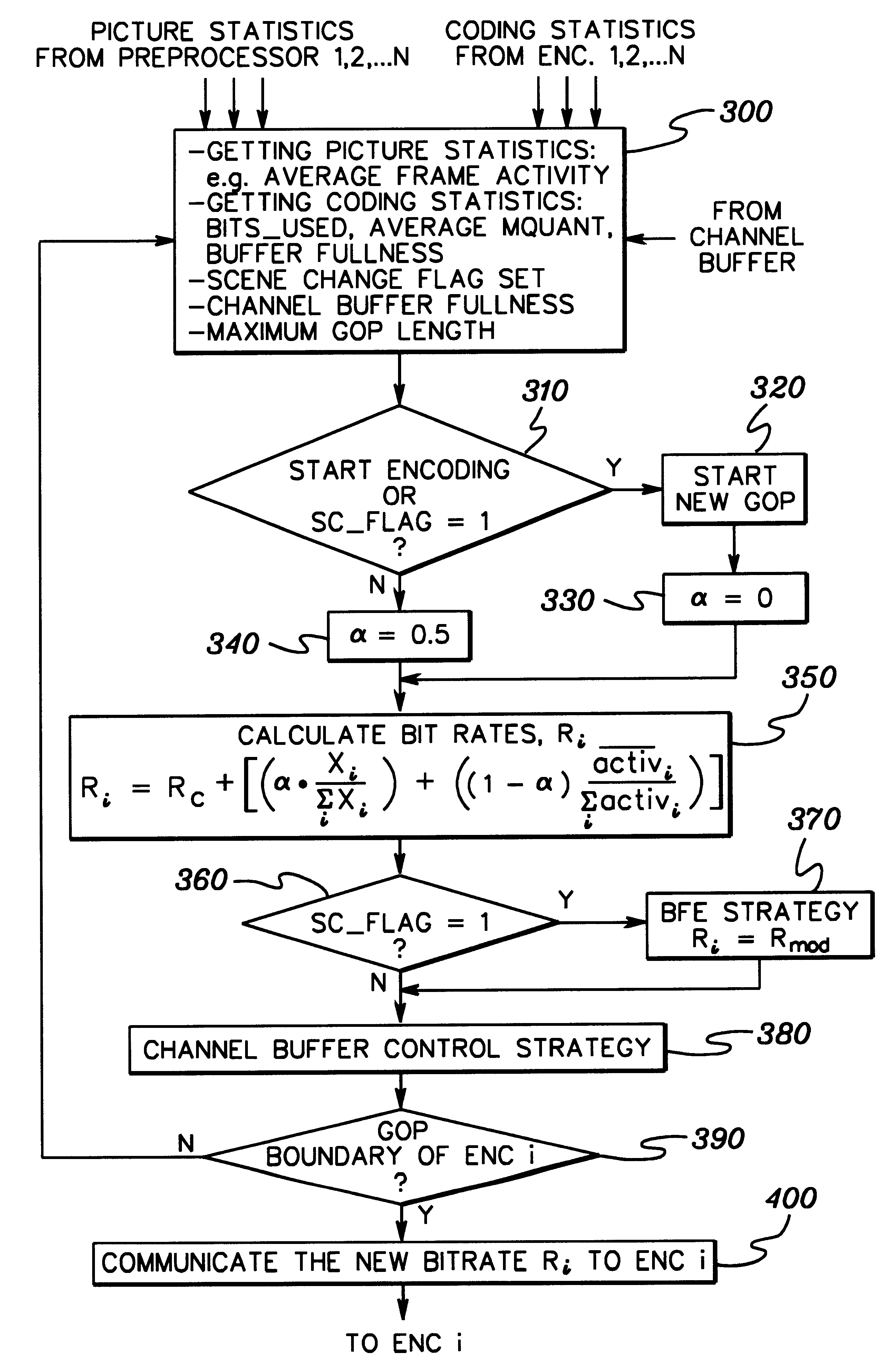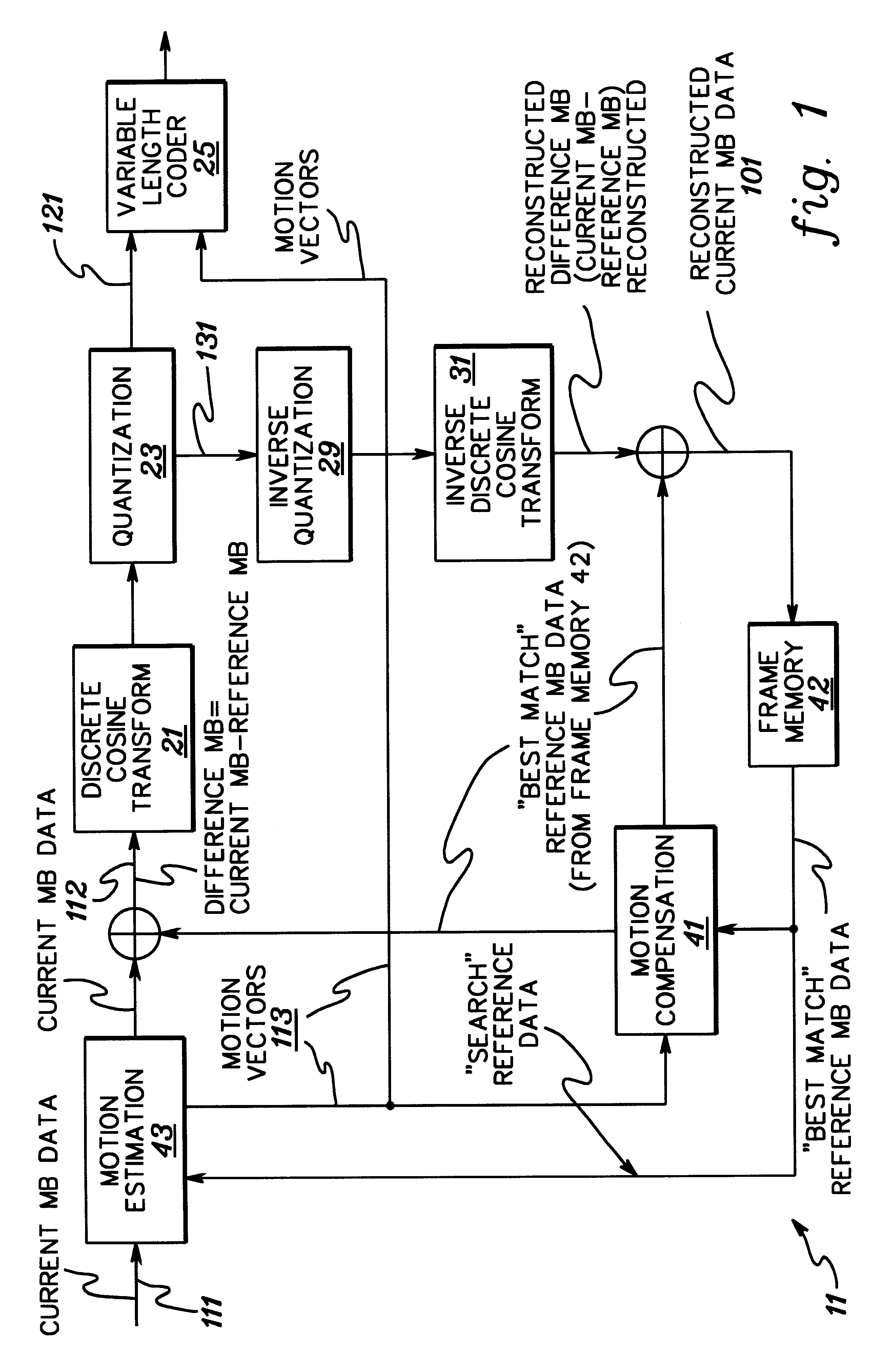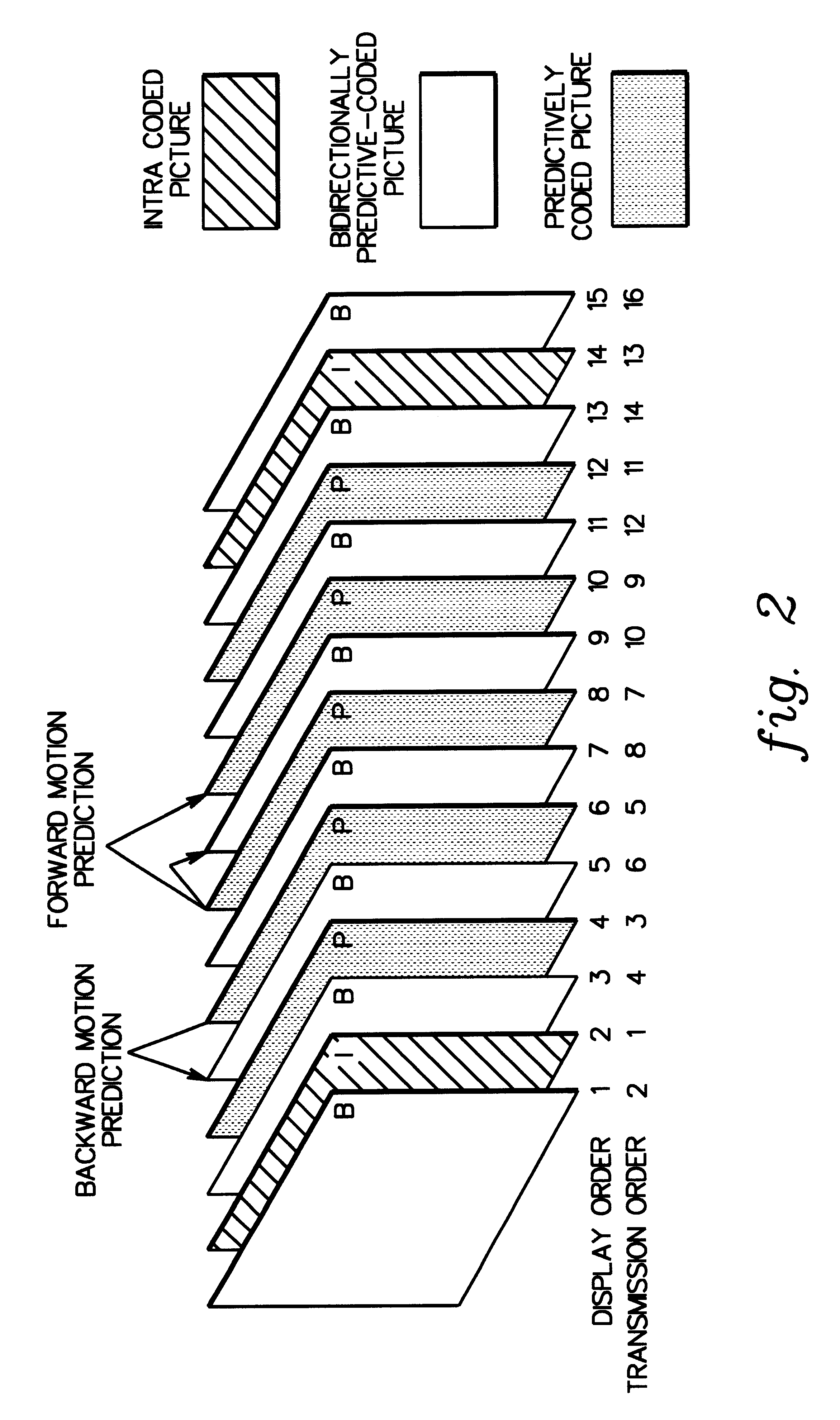Adaptively encoding multiple streams of video data in parallel for multiplexing onto a constant bit rate channel
a video data and constant bit rate technology, applied in the field of compression of digital visual images, can solve the problems of picture quality degradation, time-consuming and expensive, and difficult to control, and achieve the effect of improving picture quality and improving bit ra
- Summary
- Abstract
- Description
- Claims
- Application Information
AI Technical Summary
Benefits of technology
Problems solved by technology
Method used
Image
Examples
case 1
This is the case when the buffer fullness is between the guard bands, that is:
a·Bs≦Bf≦(1−a)·Bs (8)
In this case, the calculated bit rates for the programs are not modified generally, except at extreme circumstances.
if ΣRi>Rc and ΣRi−Rc>(Bs−Bf) / tgopmax
then Ri=Ri·[Rc+((1−a) Bs−Bf) / tgopmax] / (ΣRi) (9) (No overflow)
if ΣRi<Rc and Rc−ΣRi>Bf / tgopmax
then Ri=Ri·[Rc−(Bf−aBs) / tgopmax] / (ΣRi) (10) (no underflow)otherwise: no action
Case 2:
This is the case when the buffer fullness is in the upper guard band:
Bf>(1−a)·Bs (11)
In this case only bit rate changes are allowed which will decrease buffer fullness or stay at Bf.
if ΣRi>Rc
then Ri=Ri·(Rc / (ΣRi)) (12) (Scaling down)
if ΣRi<Rc and Rc−ΣRi>Bf / tgopmax
then Ri=Ri·[Rc−aBs) / tgopmax] / (ΣRi) (13) (No underflow)otherwise: no action
Case 3:
This is the case when the buffer fullness is in the lower guard band:
Bf<a·Bs (14)
In this case only bit rate changes are allowed which will increase the buffer fullness or stay at Bf.
if ΣRi<...
PUM
 Login to View More
Login to View More Abstract
Description
Claims
Application Information
 Login to View More
Login to View More - R&D
- Intellectual Property
- Life Sciences
- Materials
- Tech Scout
- Unparalleled Data Quality
- Higher Quality Content
- 60% Fewer Hallucinations
Browse by: Latest US Patents, China's latest patents, Technical Efficacy Thesaurus, Application Domain, Technology Topic, Popular Technical Reports.
© 2025 PatSnap. All rights reserved.Legal|Privacy policy|Modern Slavery Act Transparency Statement|Sitemap|About US| Contact US: help@patsnap.com



